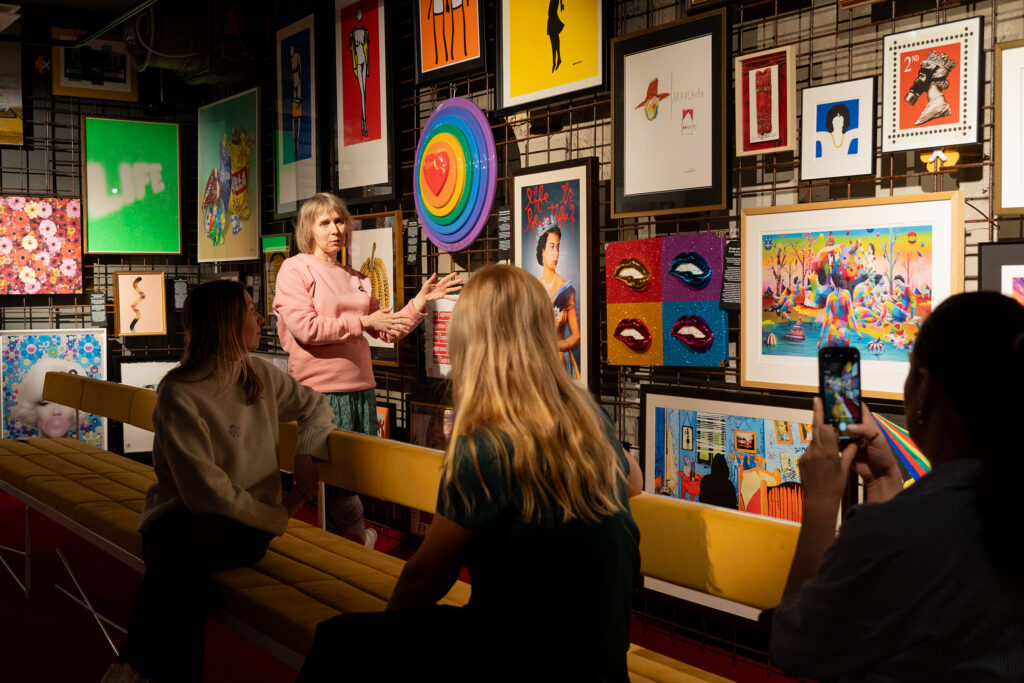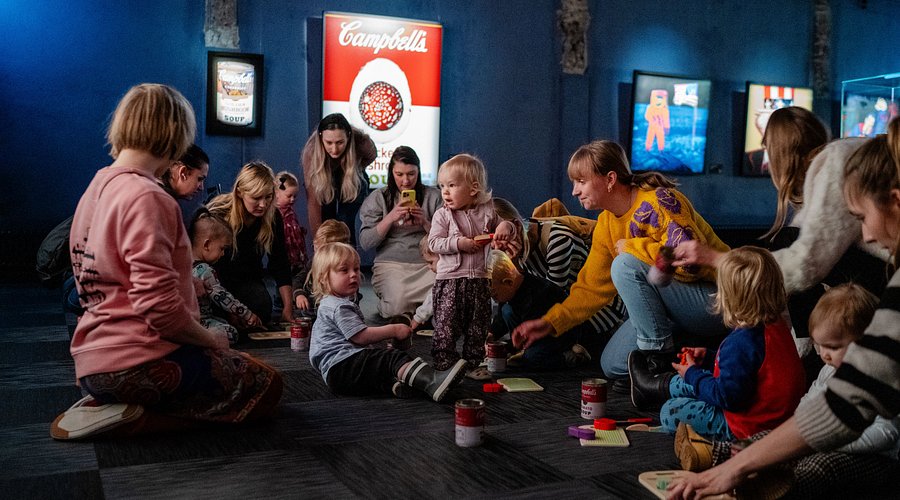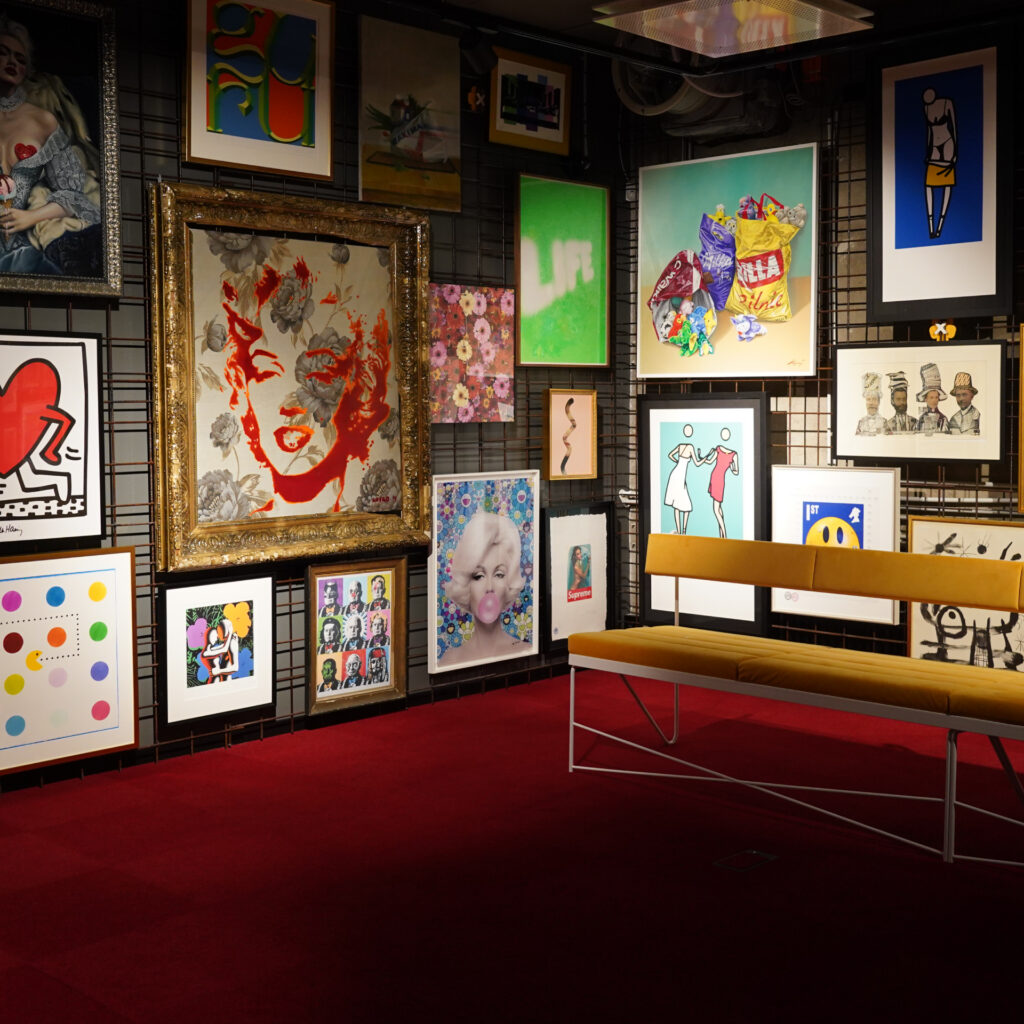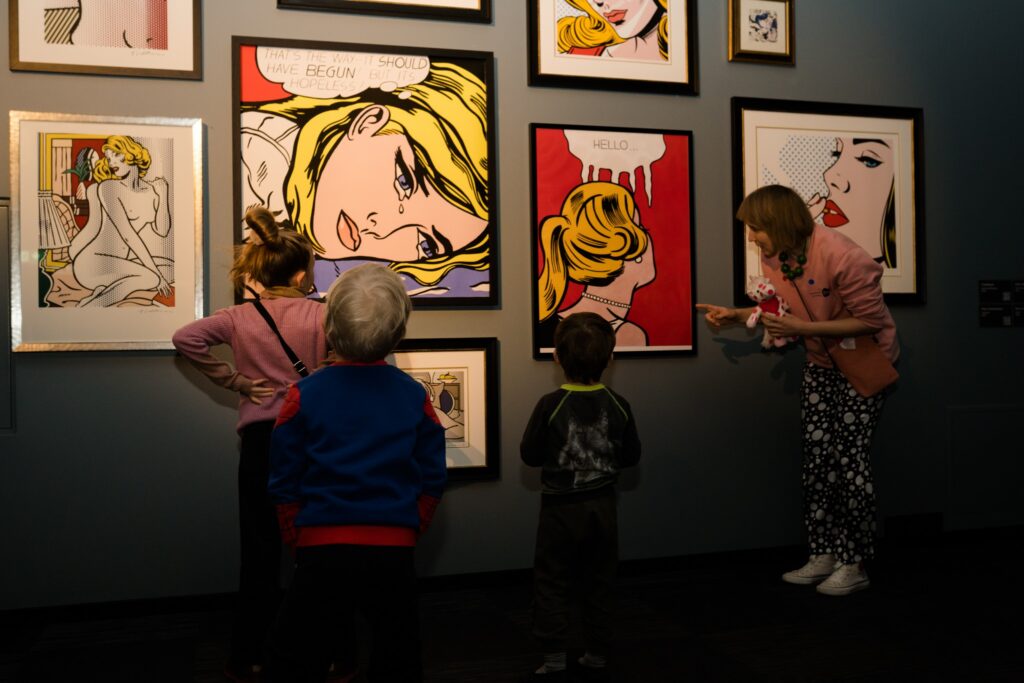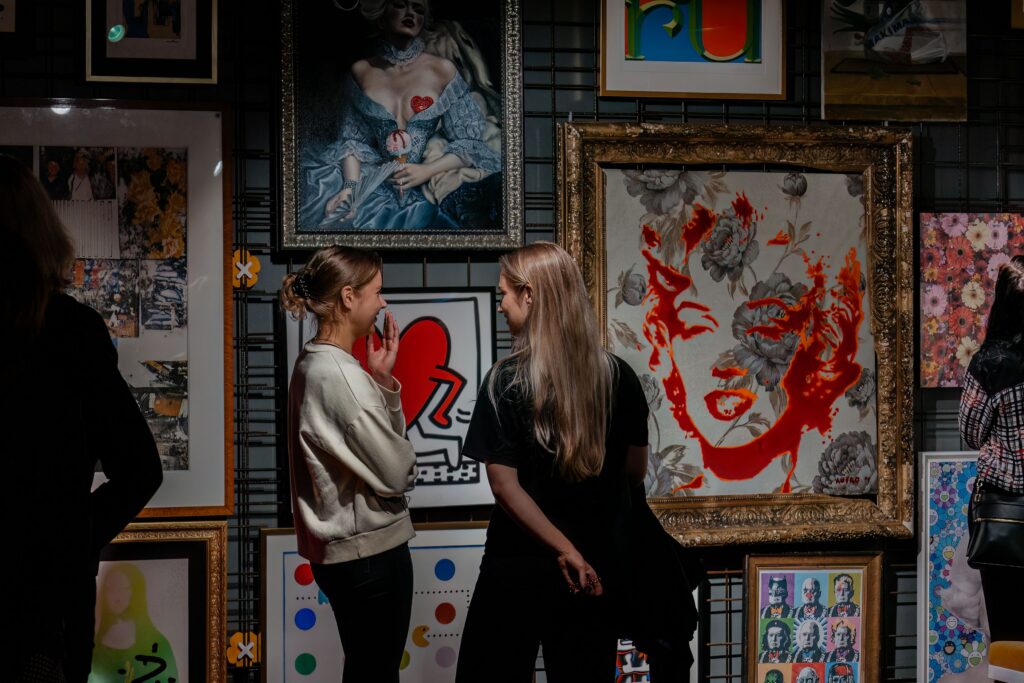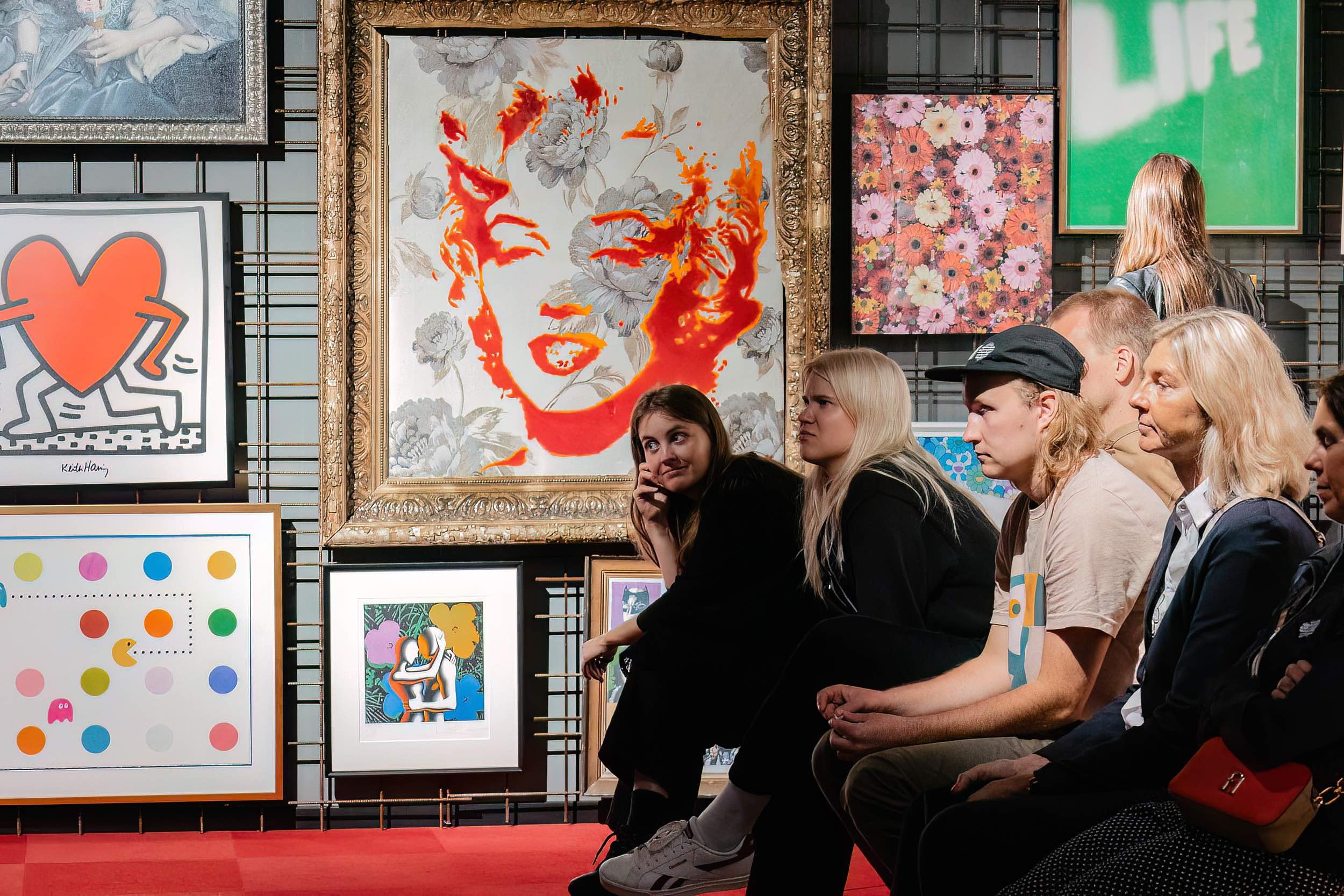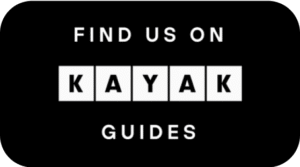Description
The starting point of Pop Art Dialogues is the idea that artists communicate with each other through works of art. At the same time, each work is like a mirror for the viewer, reflecting personal fields of meaning. In the museum lesson, we learn how Pop and street art speak to mass and native culture. We take various artist- and motif-based dialogues as a basis and explore concepts such as appropriation, interpretation and remixing. We practice the ability to “listen” to works both on a personal level and in a contemporary context.
Objectives
The student:
- gives examples of concepts in the museum, including appropriation, interpretation and remixing; analyses dialogues between artworks in the context of contemporary society.
- can notice and relate how and why artists communicate through artworks;
- perceives that there is creative freedom in art, which allows for different dialogues;
- finds motif- and artist-based dialogues in the museum and evaluates the messages conveyed;
- wants and dares to enter into a mental dialogue with artists or artworks themselves, i.e. to express and justify their opinion;
Before and after
Before the museum lesson, students can be asked to notice and find the use of well-known works of art (motifs) in popular culture, urban space, advertisements, social media memes, etc. For example, what versions of Leonardo da Vinci’s Mona Lisa, Andy Warhol’s Campbell’s Soup Cans or Edvard Munch’s The Scream have they seen?
After the museum lesson, a creative assignment can be done where the student chooses a specific work that they saw in the museum and creates their own version of it by adding something to it or changing something significantly. The most important thing is the explanation for why something was done. You can also continue the mental dialogue with the artists and look for answers to the questions that arise in interviews and biographies.

